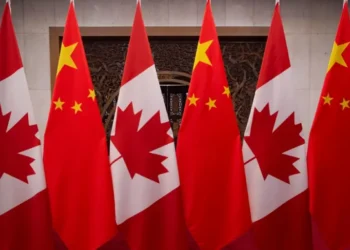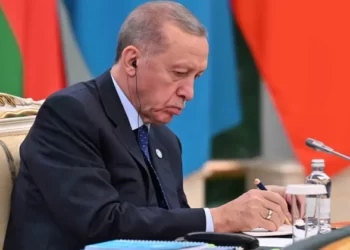Israel has approved a new settlement on a UNESCO World Heritage Site in the occupied West Bank
Far-right Finance Minister, Bezalel Smotrich disclosed that his office had “completed its work and published a plan for the new Nahal Heletz settlement in Gush Etzion”, a bloc of settlements south of Jerusalem.
“No anti-Israeli and anti-Zionist decision will stop the development of settlements,” Smotrich, who lives in a settlement, posted on X.
He added, “We will continue to fight against the dangerous project of creating a Palestinian state by creating facts on the ground.”
Smotrich stated that the new 60-hectare (150-acre) settlement, called Nahal Heletz, will form part of the Gush Etzion settlement cluster and connect the region with nearby Jerusalem.
In June, Israel announced that it was going to legalise five outposts in the West Bank, seize huge swaths of Palestinian land and establish three new settlements, which are illegal under international law.
The Nahal Heletz settlement, which received preliminary approval along with four others in June, lies between Gush Etzion and the Palestinian city of Bethlehem, south of Jerusalem.
About 700,000 Israeli settlers now live in the West Bank, including occupied East Jerusalem.
All of Israel’s settlements in the West Bank, occupied since 1967, are considered illegal under international law, regardless of whether they have Israeli planning permission.
The Israeli anti-settlement group, Peace Now denounced the plan, calling it a “wholesale attack” on an area “renowned for its ancient terraces and sophisticated irrigation systems, evidence of thousands of years of human activity”.
Peace Now said that it will flank houses in the Palestinian village of Battir, a UN World Heritage site known for its stepped agricultural terraces, vineyards and olive groves.
“These actions are not only fragmenting Palestinian space and depriving large communities of their natural and cultural heritage, they also pose an imminent threat to an area considered to be of the highest cultural value to humanity,” the organisation said in a statement.
According to a European Union report, last year Israel advanced plans for 12,349 homes to be built in the West Bank, the most in 30 years.
Palestinian Ministry Denounces Building Of New Israeli Settlement
The Palestinian Ministry of Foreign Affairs said that Israel’s appropriation of hundreds of acres of land in the Bethlehem area for the illegal Nahal Heletz settlement “comes in light of the international failure to implement the relevant UN resolutions”.
In a statement, the ministry stressed that the international community’s failure “encourages Israel to continue West Bank land confiscation and the deepening of its colonial project”.
The ministry also said that the increased demolitions that have accompanied the acts of land appropriation “constitute a blatant disregard of international resolutions, international law and the advisory opinion issued by the ICJ”.
In a landmark opinion on July 19, 2024, the ICJ declared Israel’s decades-long occupation of Palestinian land “illegal” and called for the evacuation of all existing settlements in the West Bank and East Jerusalem.
The Palestinian Foreign Ministry also termed the Israeli move as part of Tel Aviv’s “expansionist colonial policy.”
It noted that these actions “aim to connect the settlements into a massive geographical bloc, consuming significant portions of Palestinian land in the occupied West Bank.”
The ministry also condemned Israel’s ongoing demolitions of Palestinian homes and structures in the West Bank for alleged lack of permits.
Secretary-General of the Palestinian Initiative Movement, Mustafa Barghouti also condemned Smotrich’s announcement, describing it as “part of a continuous campaign of displacement and aggression against the Palestinian people.”
He stressed that the move “defies international law and the rulings of the International Court of Justice (ICJ), which have consistently rejected the legitimacy of Israeli settlements on Palestinian territories.”
READ ALSO: Oil Surplus Looms If OPEC+ Increases Supplies, IEA Data Shows























